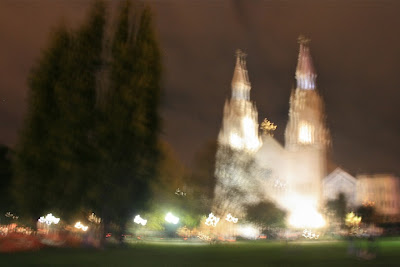 A number of crime writers my age have extensive backgrounds not only writing pulp novels, but also reading them. And many have an encyclopedic knowledge of the great black and crime films of the 1940s and 50s. I no doubt saw a whole bunch of them when I was a kid taking in double features at the big downtown movie houses in Indianapolis or later on the late night movies on TV. But many of these films, as I open the little red envelopes from Netflix, are fairly new to me. And while I claim no historical expertise I’m enjoying them immensely.
A number of crime writers my age have extensive backgrounds not only writing pulp novels, but also reading them. And many have an encyclopedic knowledge of the great black and crime films of the 1940s and 50s. I no doubt saw a whole bunch of them when I was a kid taking in double features at the big downtown movie houses in Indianapolis or later on the late night movies on TV. But many of these films, as I open the little red envelopes from Netflix, are fairly new to me. And while I claim no historical expertise I’m enjoying them immensely.Among the most pleasant of surprises are the number of supporting actors and actresses who make the movies so exciting. I saw Broderick Crawford in Human Desire the other evening and found him more interesting to watch than Glenn Ford. In Laura, Clifton Web was fascinating in a way that Dana Andrews could never be. Sure I enjoy some of the big, more glamorous stars of the times, but supporting actress Ann Sothern was more fun to watch than the more adored, romantic lead co-star of the time, Anne Baxter, in the Blue Gardenia.
In The Big Heat and Kiss of Death, two supporting players — two stellar actors as really nasty characters — stand out.
Fritz Lang directed some of the finest ‘50s black and white films, characterized by striking cinematography and perhaps a little more violence than audiences were used to at the time. Glenn Ford (The Big Heat,1953), is a homicide detective, husband and father who lives in a nice, little frame home and looks forward to dinner at home. His wholesome life is put on edge by an attempted cover-up of a corrupt cop’s activities and subsequent death. Ford’s character is completely upended when his wife is killed and his daughter is threatened. Enter Lee Marvin, who likes hurting women, including his own girlfriend. Gloria Grahame plays a “loose” woman who doesn’t take an especially brutal victimization lightly. Supporting players Marvin, particularly good as the slimy bad guy, and Grahame, who gives considerable depth to the standard bimbo role, steal the show.

I’ve seen Kiss of Death (1947) a few times. One of the reasons is that I’ve always liked Brian Donlevy. All he has to do is be in the frame to dominate the scene. The second is Victor Mature. I’ve never been a fan. He seemed to get the pretty boy roles without being all that pretty. To me, he seemed to be a parody of himself. Here he plays a criminal that, if the story is to work, has to be both believable and likable. It is important we root for him. And we do. He is entirely believable as a decent guy who, in the past, made some seriously wrong decisions. However the movie, directed by the talented Henry Hathaway, might not be all that special if it weren’t for the bigger-than-life performance of Richard Widmark as the rabid Tommy Udo. No one word can describe the kind of madness that Widmark embodies in the character, though one critic came close with just a couple of words. He suggested Udo must have been inspired by the “Joker,” from the Batman series. I can see it. It is said that the Udo role launched Widmark’s career. It is also the role that won him an Academy Award for Best Supporting Actor.
These are beer-drinking movies. In The Big Heat, both the homicide detective and his wife have beer with dinner. So does the reformed ex-con in Kiss of Death. Striving to be the average blue-collar Joe, he enjoys a bottle of brew when he returns home from work. Because both films are set in New York in the late ‘40s and early ‘50s, try to track down a bottle of Rheingold. If you live west of Cincinnati, though, you’ll just have to make do with some other American brew.

















